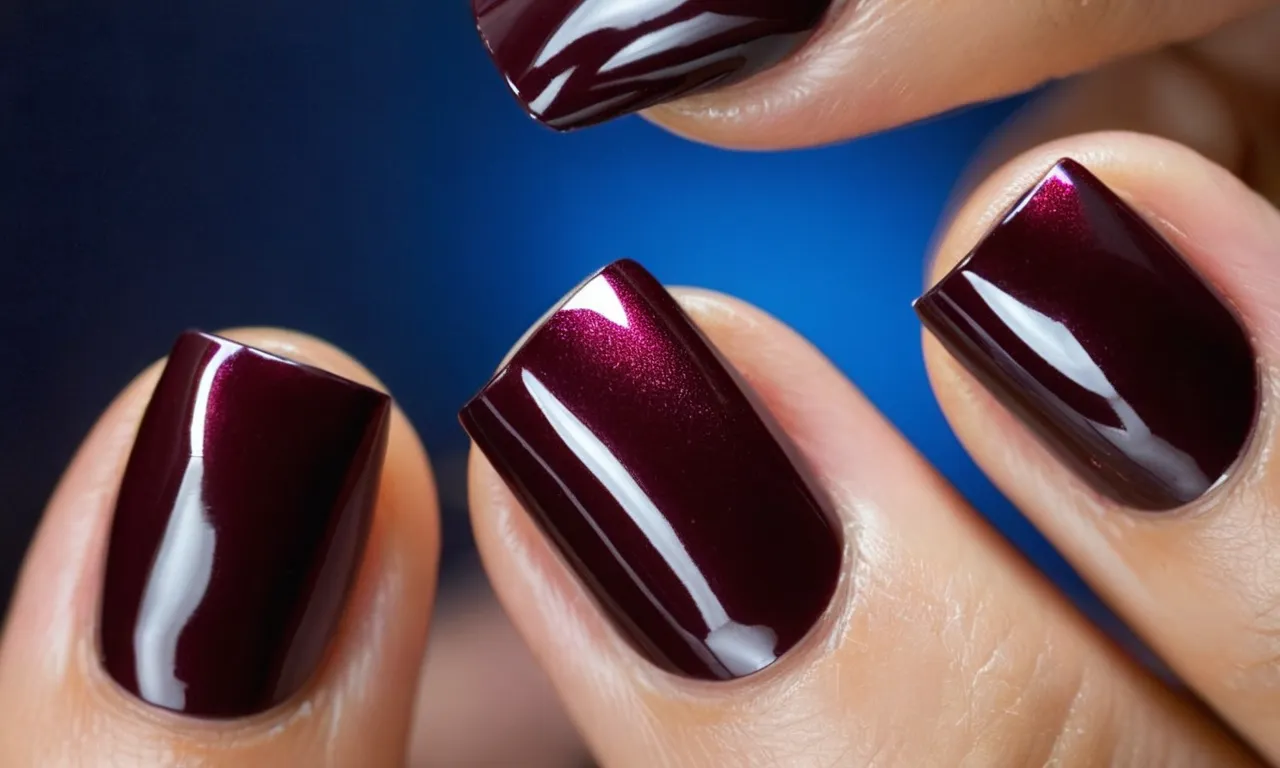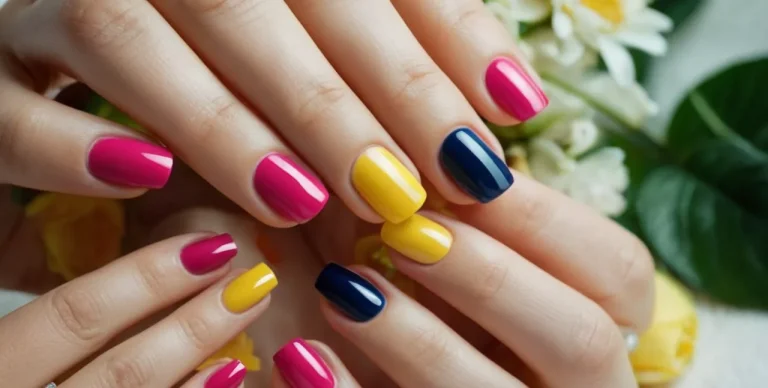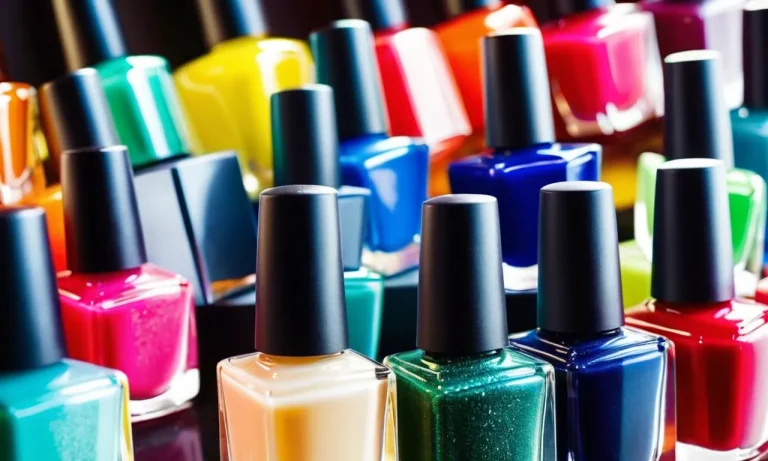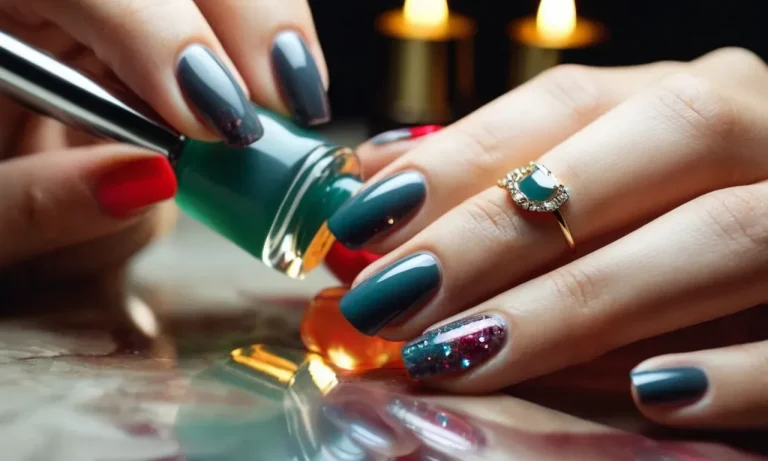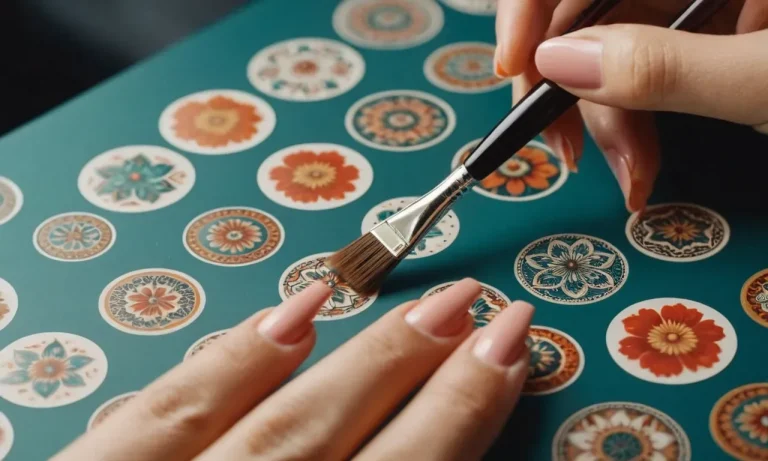Does Dip Powder Strengthen Your Nails? A Complete Guide
With the rising popularity of dip powder manicures, many people wonder if this trendy nail service can actually strengthen nails. Dip powder, also called dip nail powder, is a fast-drying alternative to acrylics that involves dipping the nails in colored powder and clear polymer.
If you’re short on time, here’s a quick answer: dip powder can help strengthen natural nails IF applied correctly and maintained properly. But it also comes with some risks. This comprehensive guide will examine the pros and cons, best practices, and alternatives to find out if dip nails are right for you.
In this 3000+ word guide, we’ll cover everything you need to know about dip powder for stronger nails including:
– What is dip powder exactly? Ingredients, how it works
– The pros of dip powder manicures – do they really strengthen nails?
– Potential risks and downsides of dip powder
– Proper application and maintenance for maximum strength
– Healthier alternatives for weak or damaged nails
– DIY dip powder tips
– And more!
What Is Dip Powder?
Dip powder, also known as SNS powder, is a popular alternative to traditional acrylics or gel manicures. It consists of a powder polymer that is applied to the natural nail and then activated with a liquid binding agent to harden and create an acrylic-like finish.
Dip Powder Ingredients
The main ingredients in dip powder systems are:
- Polymer powder – Finely milled acrylic polymer particles that create the hard surface when activated.
- Bonding agent – Acts like glue to bind the powder to the natural nail.
- Activator liquid – Liquid that initiates the polymerization process and hardens the polymers.
- Color pigments – Added to the polymer powder to create different colors and designs.
Most brands use high-quality cosmetic-grade ingredients that are considered safe for nails. However, some systems do contain more toxic chemicals like methyl methacrylate (MMA), so check the product ingredients if you have sensitivities.
How Does Dip Powder Work?
The dip powder application process generally follows these key steps:
- Prepare the natural nail – The nail is shaped and cleaned with remover to create a smooth surface.
- Apply bonding base coat – A thin layer of adhesive base coat is painted on the nail to help the powder adhere.
- Dip into colored powder – The nail is dipped into a powder pot containing colored polymer particles that stick to the nail.
- Activate with solution – A liquid activator is brushed on to harden the powder into a solid acrylic-like layer.
- Shape and buff – Once hardened, the nail is shaped, trimmed and buffed for a smooth look.
- Apply top coat – A protective top coat is applied to seal in the color and add shine.
The powder layers fuse together to create a durable, long-lasting enhancement. The process is repeated on each nail until all 10 are covered in the powder coating.
Unlike traditional acrylics, dip powder does not require ultraviolet light or mixing monomer and polymer. The powder particles adhere to the nail on their own when dipped. This makes the application process simpler than other sculpted or light-cured enhancements.
The finished manicure feels light, thin and flexible. Nails can grow out naturally without heavy acrylic lifting or damage. Dip powders come in endless colors and designs, allowing for lots of creativity.
The Pros: Can Dip Powder Strengthen Your Nails?
Creates a Protective Layer
One of the biggest benefits of using dip powder on natural nails is that it creates an extra-strong protective layer that helps shield the natural nail underneath. The powder, glue, and activator combined chemically bond together to form a durable “shell” over the natural nail plate.
This shields the real nail underneath from damage, allowing it to grow out undisturbed without peeling, fraying, or breaking. Many people find their natural nails become less brittle, less prone to splitting, and are able to grow much longer with the reinforcement dip powder provides.
Helps Nails Grow
Along with protecting nails from damage, many users report that their nails seem to grow faster with continued use of dip powder manicures. This is likely due to leaving the natural nails completely intact under the powder overlay and avoiding excessive filing or drilling during fills.
According to nail care experts, filing or shaving down natural nails can permanently damage the nail matrix and inhibit healthy growth.
Additionally, dip powder allows your nails to grow safely without worrying about breakage. The strength of the overlay allows nails to extend to lengths that would otherwise be prone to splitting and cracking.
Anecdotal reports indicate nails may grow over 2 times faster with dip powders compared to bare natural nails.
Less Damage Than Acrylics
Standard acrylic nail enhancements require more intense filing and drilling to adhere them to the natural nail plate. This can severely weaken natural nails over time. In contrast, dip powders bond via layers of glue and powder, avoiding this type of damage to the natural nail.
Additionally, soaking off acrylics also takes a heavy toll through overexposure to acetone. Dip powders can be gently filed off during fill appointments, eliminating the need for such harsh chemical removal.
This makes dip a safer choice to avoid excessive natural nail thinning and damage in the long run.
The Cons: Risks and Downsides of Dip Powder
Harsh Chemicals
Dip powder manicures require the use of acrylic powder and liquid bonding agents to adhere the powder to the nails. These chemical ingredients, like methyl methacrylate and ethyl methacrylate, can be harsh on the nails and skin and may cause irritation, peeling, or allergic reactions in some people.
Many dip powders also contain formaldehyde, a known carcinogen. While reputable brands aim to minimize the amounts of these chemicals, they are still present in most dip powder kits. Using protective gloves and avoiding overfiling the nails after removal can help reduce chemical exposure.
May Weaken Natural Nails If Not Applied Properly
Like other acrylic nail techniques, dip powder application puts stress on the natural nail. If not applied and removed properly, dip powders can lead to weak, thin, peeling nails over time. It’s important to prep the nails properly with a gentle scrub and dehydrator.
The product should then be applied carefully following package directions, avoiding overfiling the natural nail surface when buffing off excess powder. Acetone-free removal is ideal. Getting infills every 2-3 weeks rather than letting extensive regrowth occur also reduces damage.
According to nail care experts, the key is moderation. While occasional dip powder manicures likely won’t harm the nails, getting them continuously long-term can increase the risks of damage. Taking breaks to allow the natural nails to recover is advised.
Difficult Removal Process
Removing dip powder requires filing off the top layer of powder and soaking the nails in pure acetone for 15-30 minutes. The acetone breaks down the bonds so the powder can be removed. This process can be quite drying and harsh on the nails. The chemicals also emit strong fumes.
Some people may find the removal process irritating or inconvenient compared to soaking off gel polish.
There are a few ways to make dip powder removal gentle. Using acetone-free removers when possible, minimizing filing, and moisturizing the nails afterward helps reduce damage. You can also have a professional use a drill for quicker removal instead of manually filing off the top layers.
Getting the manicure removed as soon as regrowth occurs also requires less abrasion than waiting weeks or months between appointments.
While dip powders do have some downsides to consider, they remain a popular option for their durable, long-lasting wear. Taking proper precautions with application and removal while giving the natural nails occasional breaks can help reduce the risks of excessive damage over time.
Following best practices and moderation is key to enjoying the pros while avoiding the cons of this trendy powder manicure technique.
Proper Application and Maintenance
Prep Your Nails
Before applying dip powder, thoroughly clean nails to remove dirt, oil, and bacteria. Clip and file nails into the desired shape, then push back cuticles with a cuticle pusher or towel. Use a nail dehydrator and pH bond to prep the nails for adhesion.
These steps allow the dip powder to stick properly and last longer.
Let Your Natural Nails Breathe
It’s important to give natural nails a break between dip powder applications. After 2-3 weeks, remove the powder and leave nails bare for a few days. This allows moisture to penetrate and strengthen nails. Apply cuticle oil daily while nails are bare to nourish and improve flexibility.
Statistics from Nailsmag show 72% of techs recommend letting nails breathe at least one day per week.
Avoid Picking and Peeling
Though tempting, never pick at lifted edges of dip powder nails. This can pull off layers of natural nails, causing damage and peeling. If powder lift occurs, schedule a fill appointment as soon as possible.
To prevent lifting and peeling, ensure proper prep and application from the start, and be extremely gentle on your manicure between appointments.
By allowing nails to breathe and avoiding picking/peeling, dip powder manicures can strengthen nails over time. Careful application and maintenance makes this style last longer with less risk of natural nail damage.
For best results, communicate with your nail tech about any issues with lifting or peeling between appointments.
Healthy Nail Strengthening Alternatives
Biotin and Vitamins
Biotin, also known as vitamin B7, is an essential nutrient that plays a key role in maintaining the health and strength of fingernails. Multiple research studies have shown that taking biotin supplements can significantly increase nail thickness and hardness in people with brittle nails (source).
Other B vitamins like B12 and folic acid are also important for nail health.
In addition to biotin, vitamins like vitamin C, vitamin E, and vitamin D promote collagen production, which helps to keep nails strong and prevent cracking or peeling. Vitamin C also assists iron absorption, which carries oxygen to nail bed cells.
Without enough iron, nails may become brittle and weak.
Jojoba Oil
Jojoba oil is a plant-based oil that contains nutrients like vitamin E, B vitamins, zinc, chromium, selenium, and copper. It has natural moisturizing and anti-inflammatory effects that help condition nails and cuticles. Using jojoba oil regularly can prevent hangnails, dry cuticles, and peeling.
To use, apply a few drops of jojoba oil directly onto nails and cuticles, massaging it into the skin. For very brittle nails, soak fingertips in warm jojoba oil for 10-15 minutes. The vitamins and minerals in the oil will be absorbed into nails, leaving them strong yet flexible.
Nail Hardener Polishes
Many nail polishes on the market are formulated with hardeners that strengthen nails and prevent chipping or cracking. Key ingredients to look for are formaldehyde, calcium, and silk or keratin proteins.
When applied as a base coat underneath regular polish, these ingredients bond to the nail surface to create a protective barrier.
However, formaldehyde-based hardeners may cause skin reactions in some people. A safer option is to find natural nail hardeners made with components like biotin, collagen, or jojoba oil. Always test new products on a small skin area first to check for irritation.
| Product | Key Ingredients | Benefits |
| Formaldehyde hardeners | Formaldehyde, calcium | Quickly hardens nails |
| Natural hardeners | Biotin, collagen, oils | Strengthens without chemicals |
DIY Dip Powder Tips
Choose Your Products Carefully
When doing dip powder nails at home, it is crucial that you select high-quality products. Opt for dip powder kits and liquids from reputable brands like Kiara Sky, Revel Nail, and Sparkle & Co. These brands use safe ingredients and provide salon-grade results.
Pay attention to the reviews and product descriptions to ensure the dip powders are non-toxic and long-lasting.
A basic at-home dip kit includes a bond, base coat, colored dip powders, activator spray, and top coat. You may also need a dehydrator spray for nail prep and tools like files, buffers, cuticle pushers etc.
Getting the right supplies will make the DIY process easier and give you a professional manicure.
Use a Base Coat
One of the most vital steps in a DIY dip powder manicure is to apply a base coat on clean nails first. Base coats create a tacky surface for the colored powders to adhere properly. They also prevent staining of the natural nails.
Some popular base coat options are the Revel Nail Dip Base Coat and Kiara Sky Dip Base Coat.
Apply a thin, even layer of the base coat on each nail and let it dry completely. This takes around 2 minutes. Dipping nails without the base coat will make the powders fall off easily. You can reapply a second base coat layer if the nails still feel smooth and not sticky enough for powder application.
Patience Is Key
Rushing through the process can ruin your DIY dip manicure and cause chipping or lifting. At each step like applying base coat or dipping the nails in powder, it is vital you wait for items to dry between layers. This allows products to set properly.
Moreover, filing and shaping the dip nails requires meticulousness to get an even look. Use 100/180 grit files to shape the nails and buffers to smooth them out. Always file in one direction instead of back and forth. Getting the right shape and finish requires patience.
So relax and set enough time for your at-home manicure.
Conclusion
While dip powder manicures have become widely popular for their quick drying time, high shine finish, and chip resistance, the jury is still out on whether they can actually strengthen natural nails. With proper application and care, dip powder may help protect nails and prevent breaks.
However, the chemicals involved also come with risks of damage over time with overuse. For those seeking an instant polish boost, an occasional dip manicure from a skilled technician may provide temporary strength without compromise.
But investing in nail health through a nutritious diet, vitamins, and moisturizing oils is the best way to get strong, beautiful nails that last.

